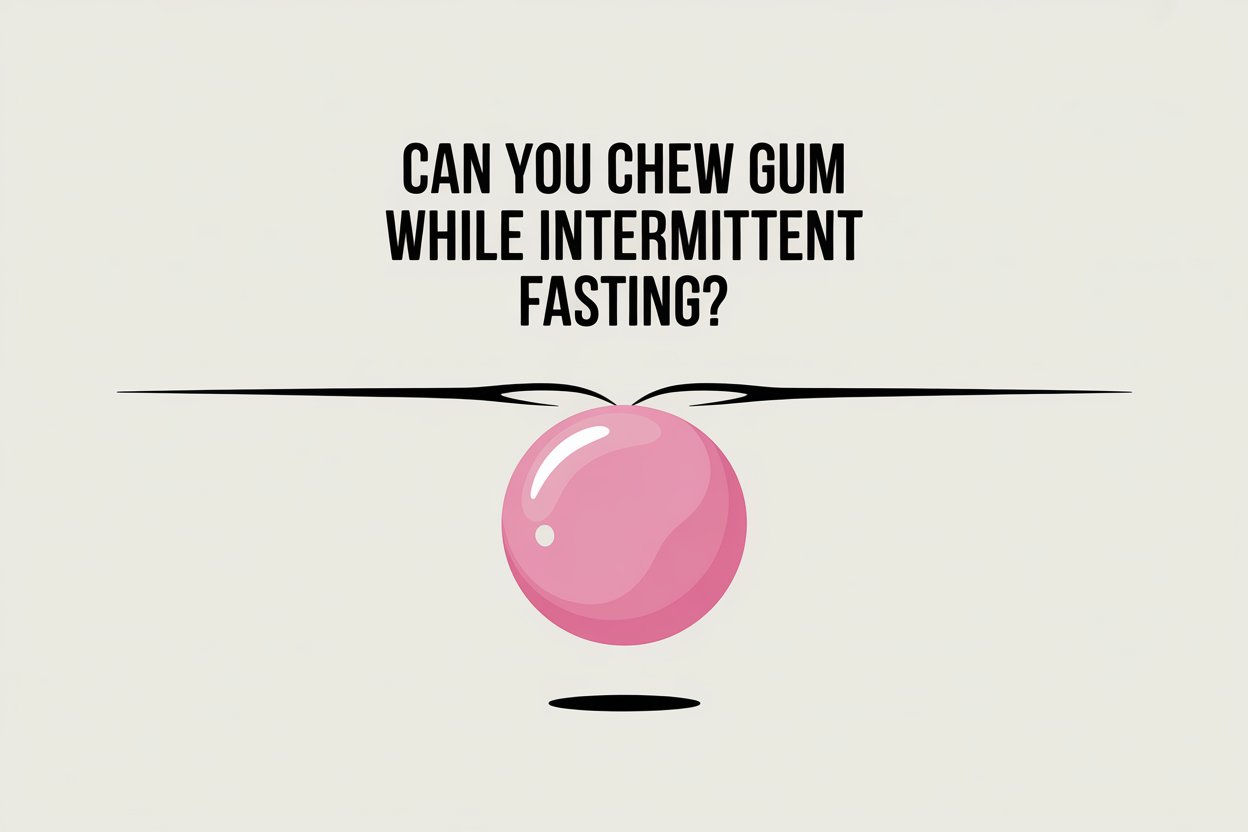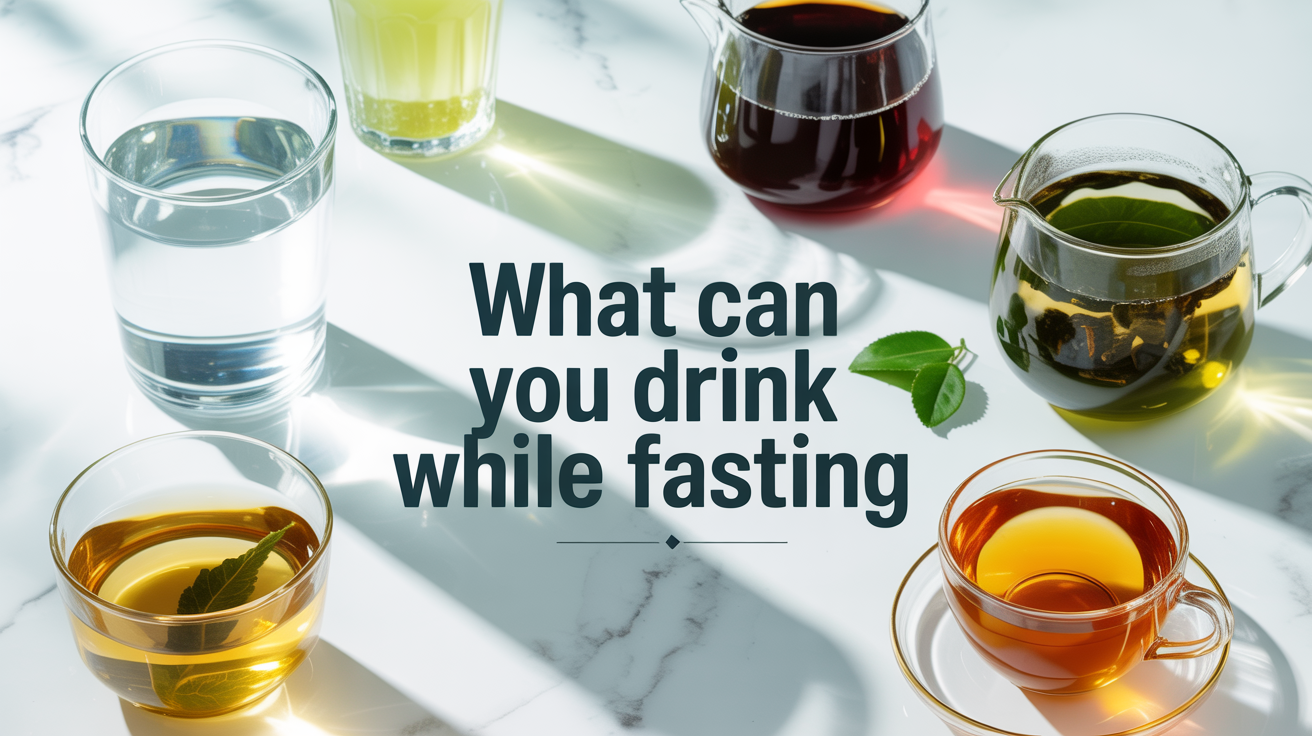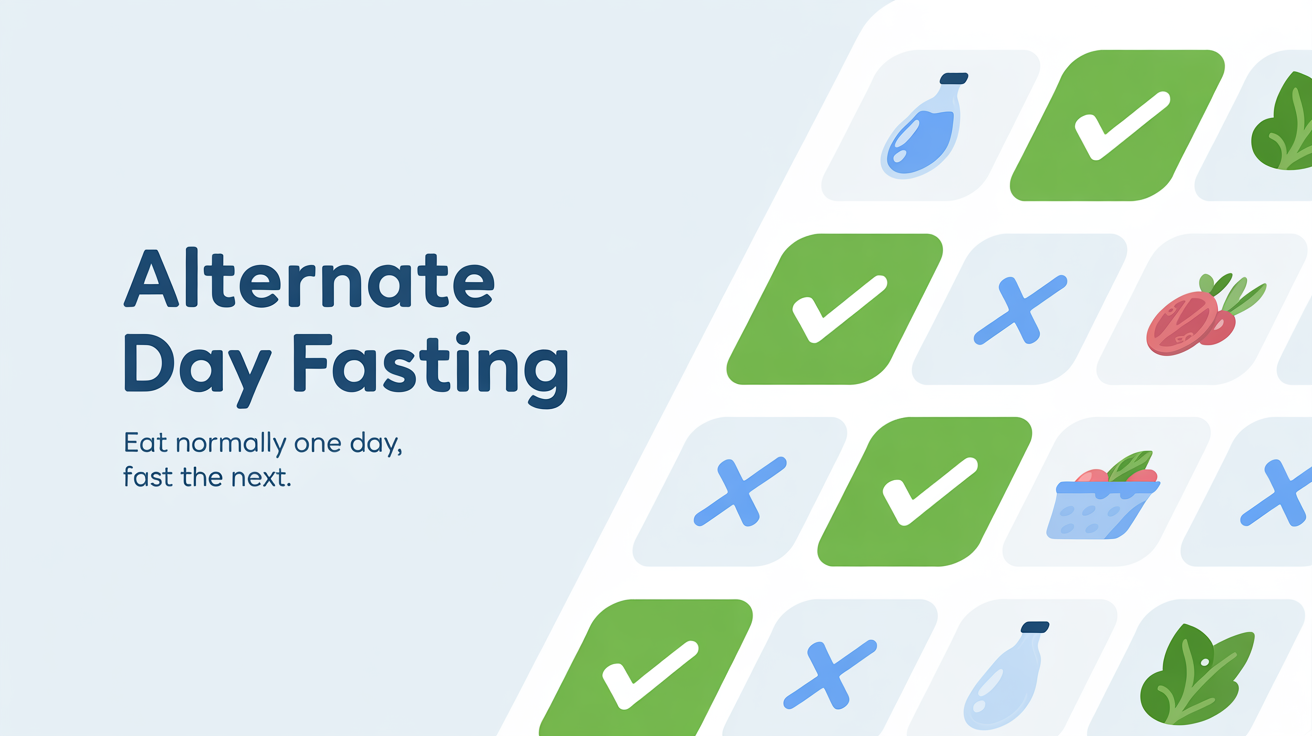Hour thirteen of a sixteen-hour fast. Hunger kicks in, so you grab a stick of sugar-free gum. Minty focus sharpens… then the thought hits: did that just break my fast?
On paper, gum has almost no calories. But fasting is not only about calories. It is also about signals, including insulin, appetite hormones, and gut messengers, that determine whether your body remains in a fasted state or shifts into a fed state.
Let’s take a careful look at what the research says about chewing gum while fasting and how it may affect your results.
What “Breaking a Fast” Really Means
There are two ways people usually define it. Strict version: any calories count. By that rule, even the five calories in gum technically break your fast.
However, the goal-based definition looks at whether something interrupts the benefits you are fasting for. If your aim is fat burning, improved insulin sensitivity, cellular cleanup (autophagy), or simply steadier appetite control, then “breaking” a fast depends on whether gum interferes with those goals.
A stick of sugar-free gum typically has between zero and five calories. That is negligible in terms of energy. Yet fasting is about more than energy. The act of chewing and tasting something sweet can send hormonal signals to the body. Scientists refer to this as the cephalic phase response, which involves the release of small, early bursts of insulin and digestive hormones before actual nutrients enter the bloodstream.
What’s Actually in Gum?
Not all gums are the same, and their ingredients matter. Sugar gum contains real carbohydrates. This will break a fast under both definitions. But sugar-free gum, on the other hand, usually contains non-nutritive sweeteners such as aspartame or acesulfame-K, sugar alcohols like xylitol or sorbitol, flavors, and sometimes even caffeine.
There’s also tasteless gum, made for chewing without sweetness. It sounds harmless, but flavor cues matter more than most people think.
Non-nutritive sweeteners (NNS) are not always metabolically neutral. Findings are mixed: some trials show no change in insulin sensitivity with sucralose or aspartame alone over two weeks, while others show reduced insulin sensitivity when sucralose is repeatedly consumed alongside carbohydrates. Gum formulas vary, but the takeaway is that sweet taste and certain additives can matter even without sugar or calories.
What the Research Shows
Chewing and Appetite Hormones
One trial found sugarless gum boosted GLP-1, the satiety hormone, and left people less hungry. Translation: gum can make a fast feel easier for some.
Cephalic Phase Insulin Response
Human studies on taste and chewing show that simply having something sweet in the mouth may trigger small insulin or pancreatic polypeptide pulses. These effects are generally mild and differ from person to person, but they explain why “zero calories” does not always equal “no impact.” Even if you think something might be safe because it’s calorie-free, it might still be affecting your fast.
Sweeteners and Insulin Sensitivity
In a randomized controlled trial, people who were not regular consumers of sweeteners experienced about an eighteen percent reduction in insulin sensitivity after consuming sucralose daily for two weeks. Other research supports the possibility of these changes, although outcomes differ depending on the specific sweetener and the dose, and further study is needed.
Microbiome Effects
A well-known 2014 study in Nature showed that several artificial sweeteners altered gut microbes and induced glucose intolerance in some—but not all—participants. That helps explain why gum feels harmless for one person and derails another. Responses are individual, and science is still teasing apart why. However, who is affected versus those who might not be as impacted is still being researched.
Tasteless Gum
A small pilot study found that chewing tasteless gum before a meal nudged early GLP-1 and insulin levels upward and blunted the immediate glucose rise compared to not chewing gum. It didn’t test flavored gum, so we can’t say tasteless is ‘safer’ than flavored.
Dental Benefits
Xylitol gum has well-established dental advantages and generally minimal insulin impact when ingested. For fasting purposes, it can be a reasonable option, although it is toxic to pets. So, if you have a furry friend at home, be sure to keep this away from them.
Comparing Gum Types
When you look at the different gum types, there are obvious differences between them that are important to consider and impact your fast. Sugar gum contains carbs and clearly breaks a fast, so it should be avoided.
Sugar-free gum is calorie-free, but may still create subtle hormonal effects depending on the ingredients and the individual. This is not a one-size-fits-all situation, but if you’re looking for something safer, tasteless gum might be an option, but we’re still not sure how it impacts our metabolisms.
Practical Rules for Using Gum During Fasting
Here’s how to make gum work with your fasting goals:
- If your primary goal is weight control or adherence, one or two pieces of sugar-free gum are unlikely to derail progress.
- If you are fasting to optimize insulin sensitivity, ketosis, or autophagy, the safest option is to avoid sweet tastes during your fasting window.
- Avoid chewing continuously throughout the morning. Use gum strategically, such as when cravings are strongest.
- Xylitol gum can be a smart choice if you tolerate it, since it supports dental health and has little effect on insulin in humans.
- And finally, consider experimenting. Try two weeks with gum and two weeks without, while keeping track of hunger, cravings, energy, and weight. Your own data will tell you more than general rules.
So, Does Gum Break a Fast?
From a strict calorie perspective, sugar-free gum does not meaningfully break a fast. From a goal-based perspective, the answer is more complex. If your fasting practice is primarily focused on weight loss and routine, gum can be a helpful tool. If you are fasting for deeper metabolic effects, such as improved insulin sensitivity or enhanced autophagy, even small hormonal signals from chewing and sweeteners may be significant.
The only way to know for sure is to test your own response and see how your body reacts.
Make Fasting Personal with Municorn
Fasting works best when it’s personal. Use the Fasting App by Municorn to log gum use, cravings, and energy. Run a two-week A/B test—gum one week, none the next. Compare results, spot patterns, and make your fasting strategy yours.




